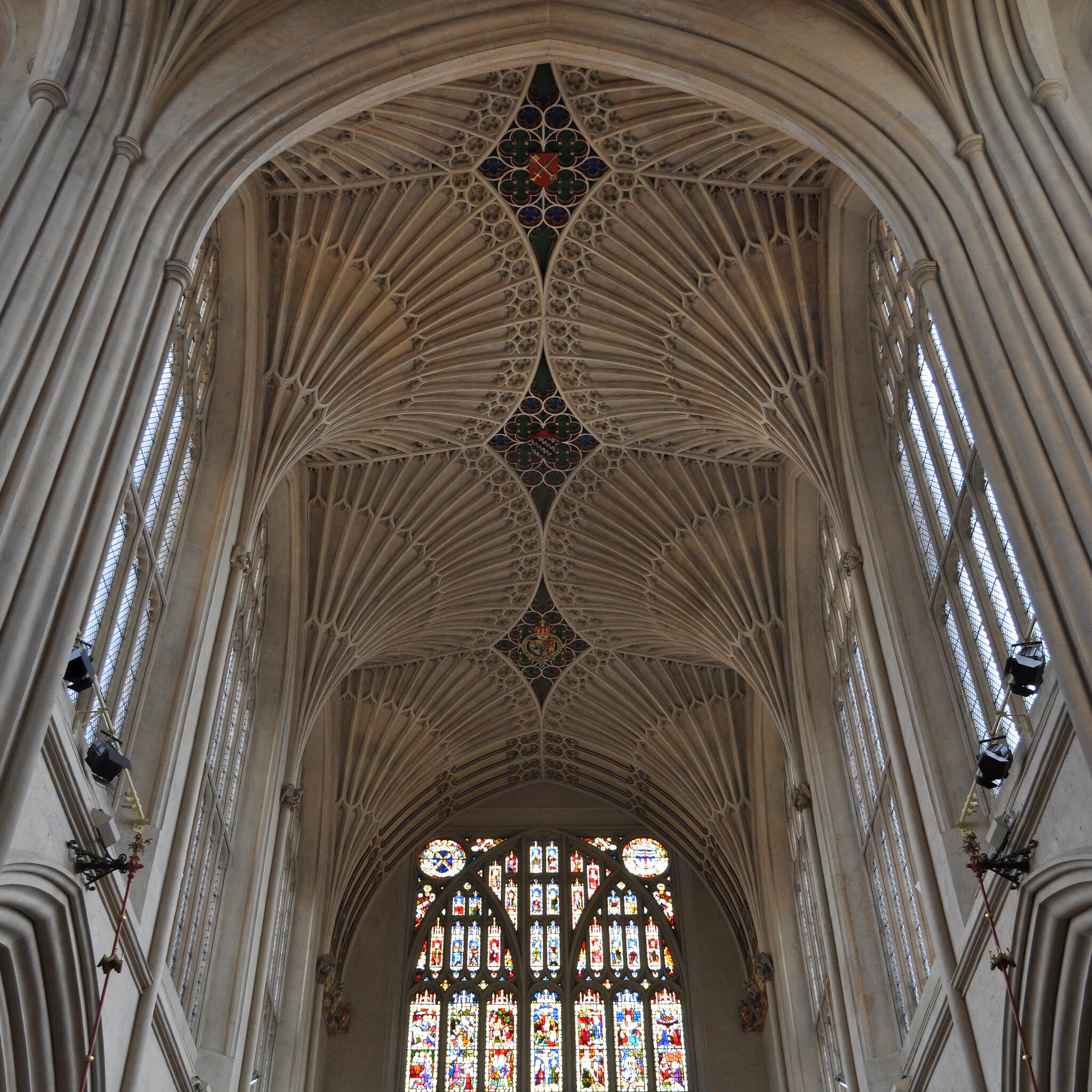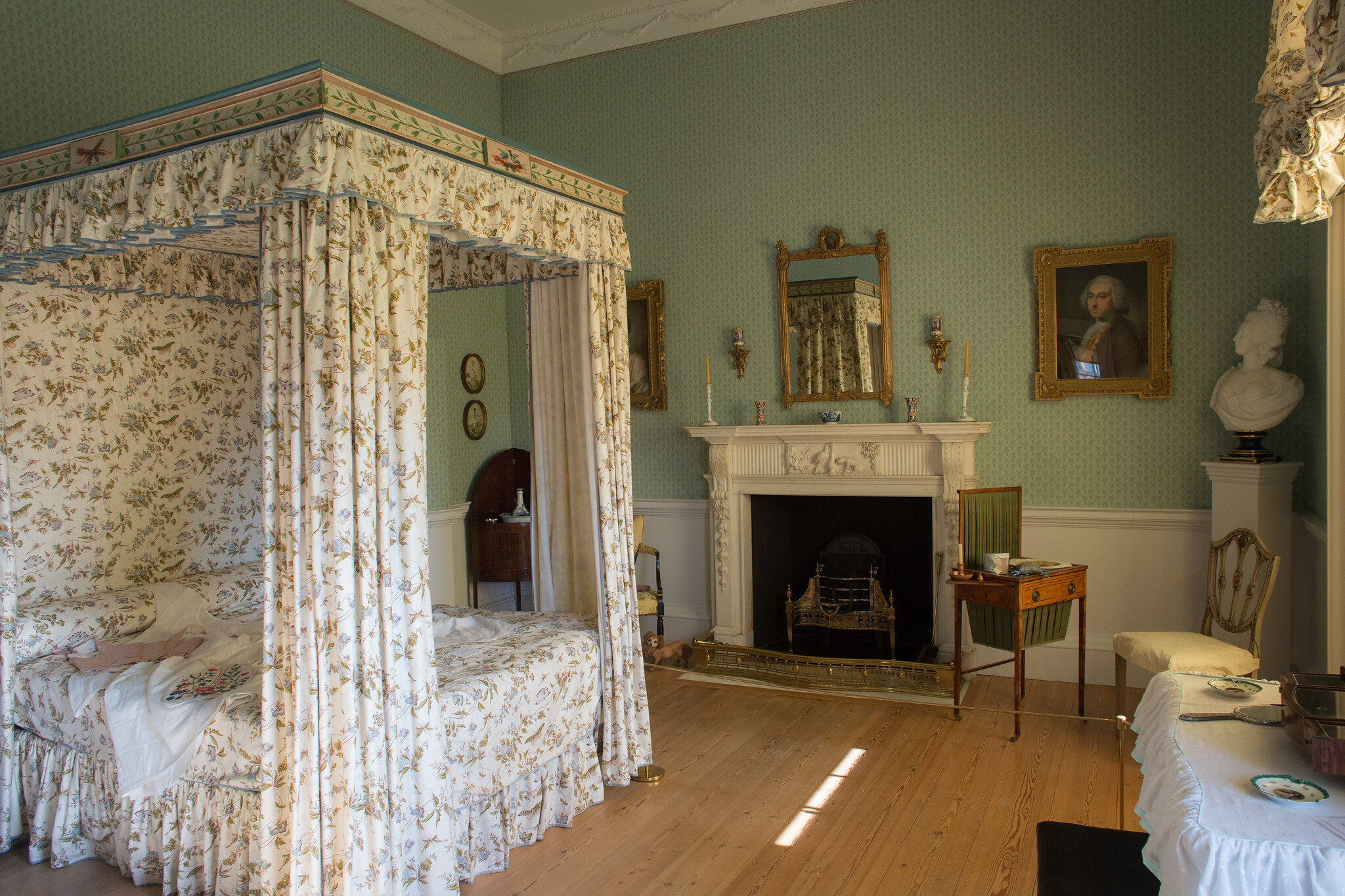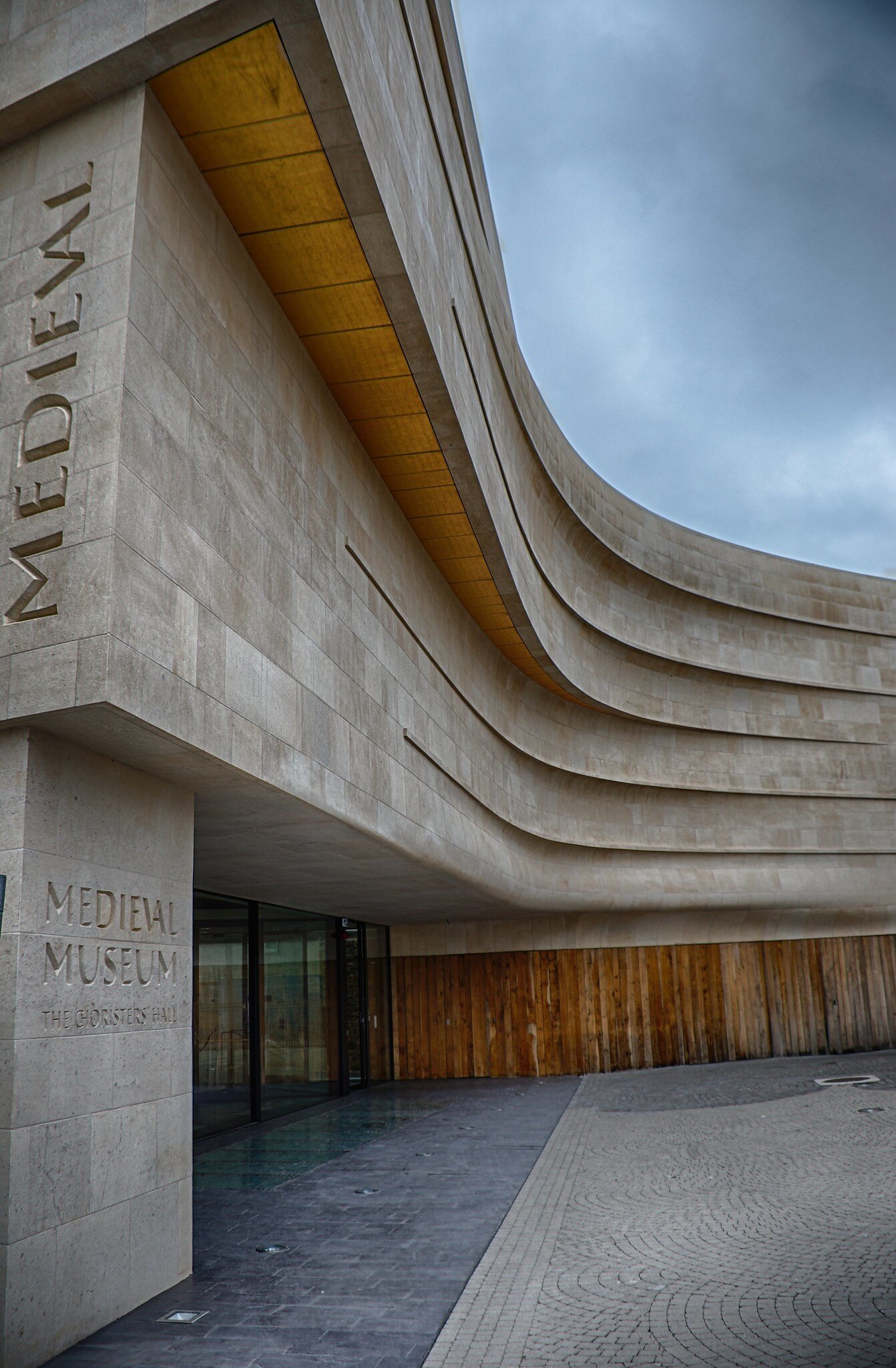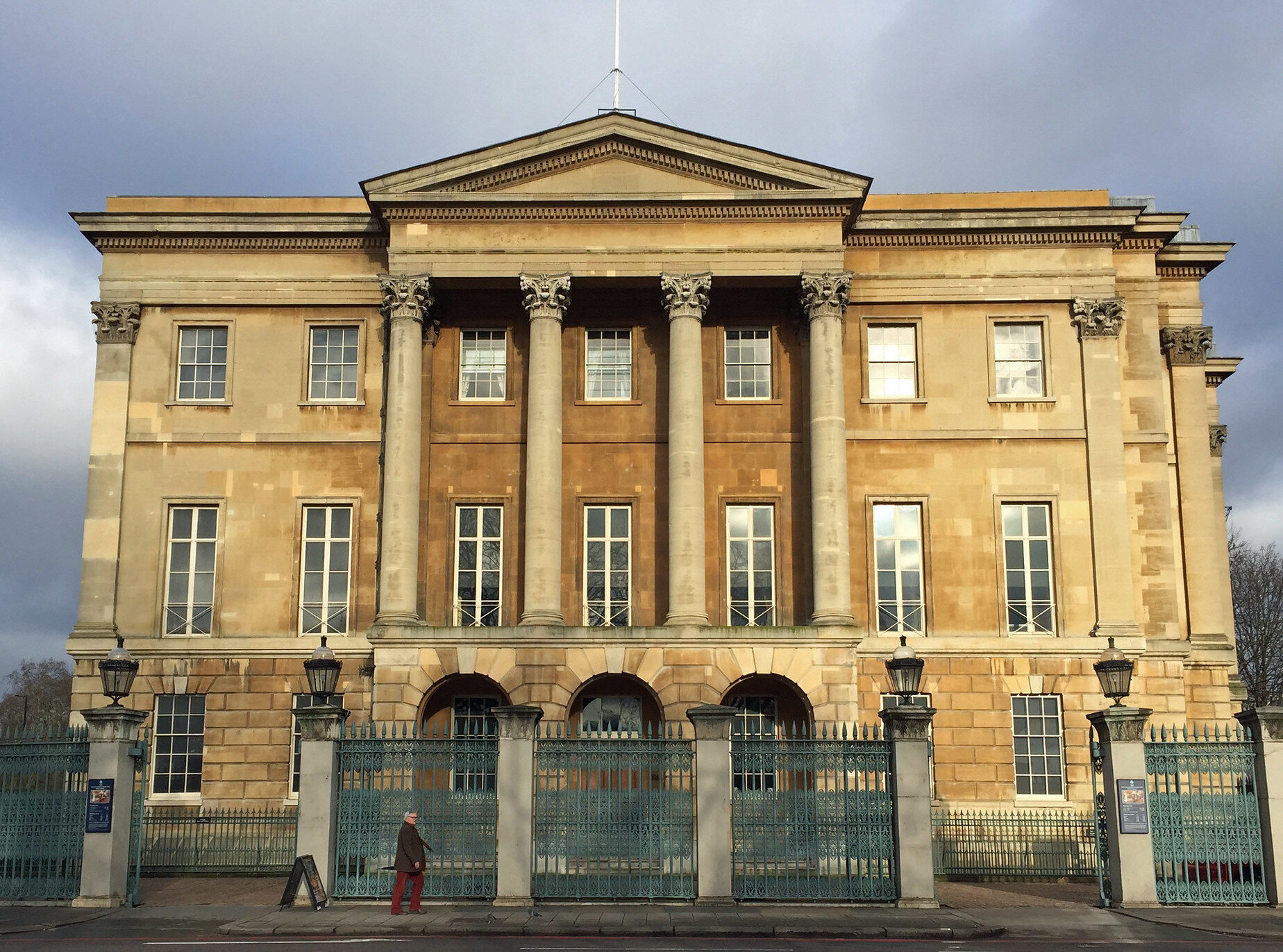The Bath Preservation Trust & The History of Bath Stone
Bath Abbey ceiling by Lawrence OP is licensed under CC BY-NC-ND 2.0
A part of our work at WOOLF Interior Architecture & Design is to carefully consider the history and architecture of the buildings we work on, which informs our approach to conserving or designing interiors for listed buildings. We have developed expertise and experience over many years of sensitively designing every aspect of commercial and residential interiors for traditional and historic buildings, in the UK and Internationally. We are acknowledged for our specialist skills designing for Grade I or II listed buildings and are accredited Historic Interior Designers. We are affiliated by and have accreditations with organisations who protect the best interests of our precious and stunning historic buildings. Our Bath WOOLF Interior Design Studio looks to the Bath Preservation Trust for guidance and compliances which are specific to the Regency and Georgian interior vernacular.
"Bath Abbey" by vic15 is licensed under CC BY 2.0
Bath abbey, the virtue brothers by seier+seier is licensed under CC BY 2.0
About the Bath Preservation Trust
Bath is a predominately Georgian City with many stunning architectural buildings that need to be preserved. When we embark on a project, there are specific rules that need to be adhered to and the Bath Preservation Trust is an organisation that will oversee this important work. Explore WOOLF Historic Interiors.
The Bath Preservation Trust was founded in 1934 as a small pressure group, with the object of protecting the city’s unique architectural heritage. Since its creation it has saved hundreds of listed buildings from demolition. The Bath Preservation Trust exists “to preserve for the benefit of the public the historic character and amenities of the City of Bath and its surroundings”. In a city with such a wealth of heritage there are inevitably difficult challenges to be faced in reconciling the demands of a modern thriving city alongside the exceptional level of conservation care demanded in a World Heritage Site.
Royal Crescent, Bath. John Wood the Younger, 1767-1774." by seier+seier is licensed under CC BY 2.0
"Parlor in No. 1 Royal Crescent" by Ashlyn G is licensed under CC BY-ND 2.0
"Bedroom in No. 1 Royal Crescent" by Ashlyn G is licensed under CC BY-ND 2.0
Much of The Bath Preservation Trust’s work involves engaging with those whose decisions determine the city’s future, inspecting and responding to planning applications in the conservation area and responding to listed building consent applications by providing informed statements at planning meetings and expert witnesses at Public Enquiries.
Their archives are a really valuable resource for anyone looking to restore or make changes to a Georgian property in Bath. People can use them to research the history of any 20th century alterations to a property, and they are frequently used by designers and homeowners wanting to replace more modern fixtures with more age appropriate designs. The interiors archive, in particular, is often used to show original fireplaces or plaster mouldings recorded in houses on a particular street. The archive collection catalogue can be searched here http://www.bath-preservation-trust.org.uk/archives-library/archive/
The Bath Preservation Trust also have an historic wallpaper collection, this is a great source of inspiration and one that is constantly being added to as people redecorating their homes find old fragments of wallpaper behind their cupboards.
Bath Preservation Trust - Building Archive
Bath Preservation Trust - Wallpaper Archive
Historic Museums in Bath
The Bath Preservation Trust is a major provider to the local tourist economy as it owns and runs museums and educational activities at No. 1 Royal Crescent, the Museum of Bath Architecture, Beckford’s Tower and the Herschel Museum of Astronomy; all of which have been restored by the Bath Preservation Trust and provide a valuable historical resource for the city and its visitors.
The Holburne Museum, July 2016 by David A. Russo is licensed under CC BY-SA 4.0
Detail credit to: Stone Ham and Doulting Stone Co Ltd
Staying Current
The Bath Preservation Trust has maintained its importance in the city by not only advising and protecting the architecture and interiors of buildings in Bath, they also run a vibrant Twitter and Instagram account where they engage with the local community and celebrate their work in conservation, education and debate. Their inclusive approach has broadened their reach and supports the future success of our beautiful heritage city. At the heart of the success of their social media engagement, is the Bath Preservation Trust bringing together architectural enthusiasts, specialists with historic expertise, experts in planning and conservation, educators and the local community.
Detail credit to Paul Roddan Somerset Stonemasons
"Medieval Museum Exterior" by djwtwo is licensed under CC BY-NC-SA 2.0
A History of Bath Stone
The building material which is key to the historic look and feel of Bath Architecture is the famous Bath stone. It is oolitic limestone which dates back to the Jurassic period (195 to 135 million years ago) when the area, that is now known as the city of Bath, was covered by a shallow sea. Interestingly, even today, decayed skeletons of marine life deriving from the marine sediment which was deposited on top of the grains, can still be seen. In fact, two well-known limestones were formed in the area; Bath Stone and Portland Stone. Bath Stone is distinctive in that it has a subtle, warm, honey colour rather than the greyish/off-white appearance of its close relative Portland Stone which is mined from slightly further South-West.
Originally mined in Somerset but now mostly mined in the Corsham area, Bath Stone has been a popular building material for thousands of years. Due to the perfect conditions which formed it, Bath Stone has a uniformity which lends itself to grand architecture, plus it can be cut (or ‘squared’) in any direction without compromising its strength. However, its beauty in finer detailing also makes it a great material for relatively smaller works, such as fireplaces or even lighting and ornaments.
Apsley House, 'No 1 London by diamond geezer is licensed under CC BY-NC-ND 2.0
Bath Stone by samsaundersbristol is licensed under CC BY-SA 2.0
Bath Stone in London
With the advent of the canal network in 1790 and later the Railway Network in 1850, Bath Stone flooded into London en-mass as a cheap stone building material, cheaper than hardwood. Bath Stone made a good alternative to timber as it wouldn’t shrink, crack or twist and crucially it could be painted. Despite the enormous volume of business the Bath stonemasons must have been somewhat disappointed when they found out that many of the homes built in London of Bath Stone were all to be painted! Despite its softness it still weathered incredibly well; as displayed by the enormous numbers of stunning buildings around the South built with Bath Stone that still exist today.
Lancaster House by James.Stringer is licensed under CC BY-NC 2.0
Although there are many examples of the use of Bath Stone in London, much of the City of London – the more prestigious buildings – were built in Portland Stone. A few of the most well-known buildings built of Portland Stone include St Paul’s Cathedral, The Bank of England, Buckingham Palace (the facade) and The Royal Courts of Justice. Explore WOOLF Historic Interiors.
While Portland Stone is an excellent building stone and superb for fine carving and sculpture, it does take around 30-50% longer to work than Bath Stone, and is costlier when bought by the cubic meter. When stonemasons are called in to replace parts of historic buildings, Bath Stone is often the stone of choice for its workability and longevity of life. Watch this fascinating video showing the incredible workmanship of The Bath Stone Group.















